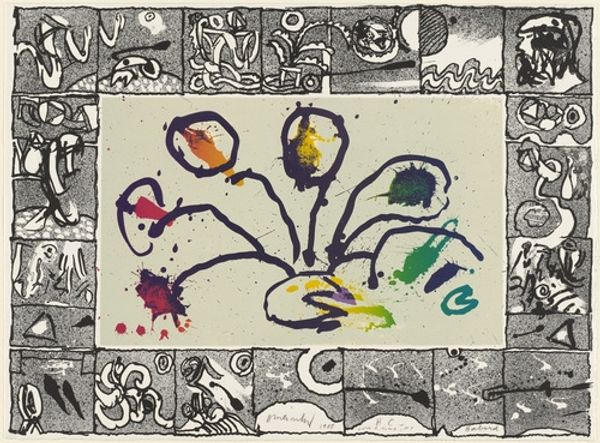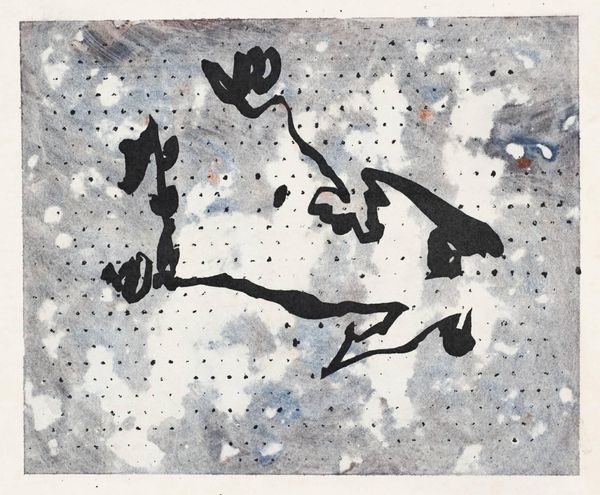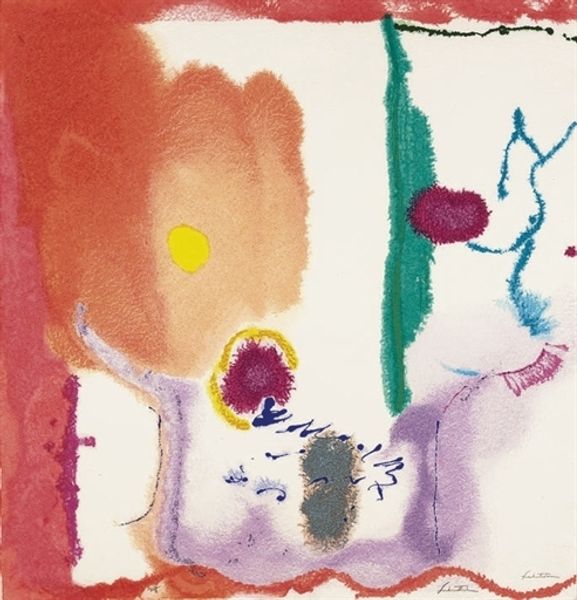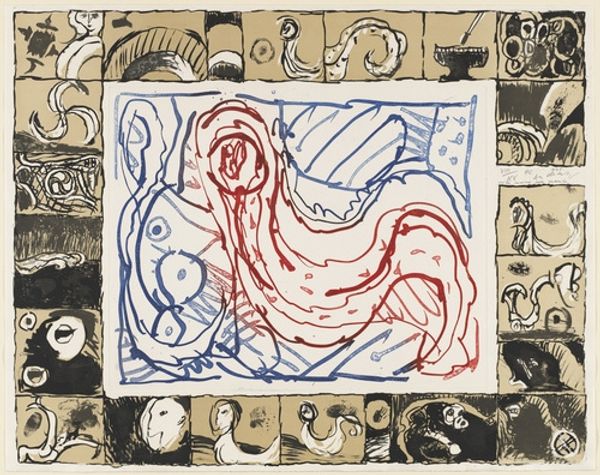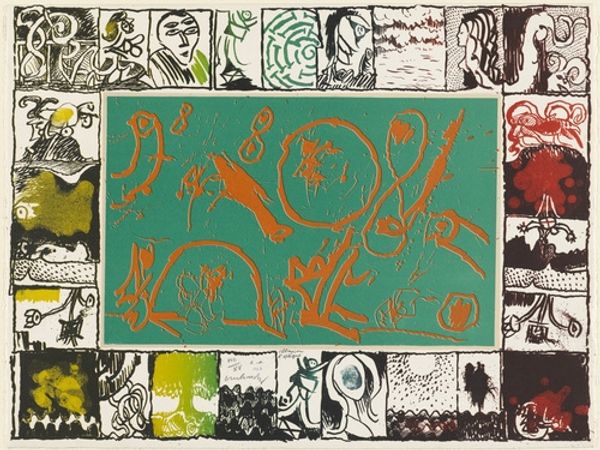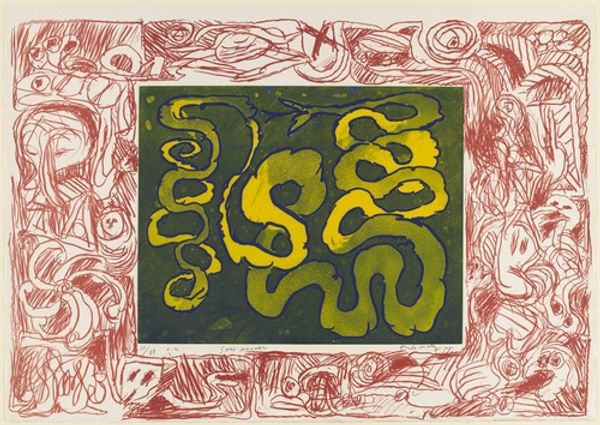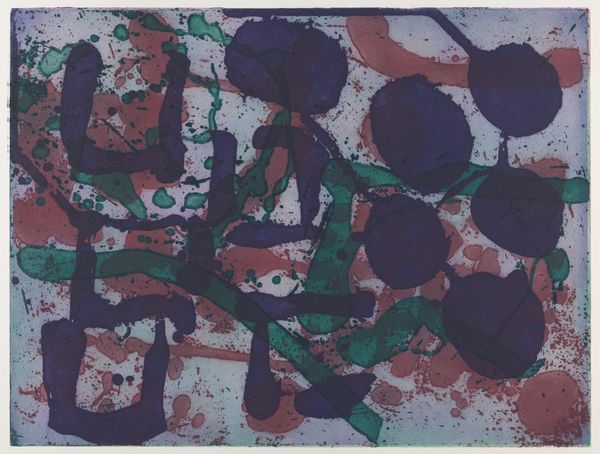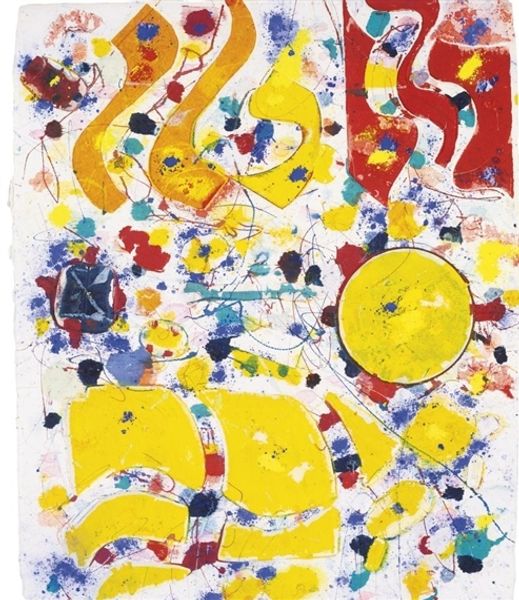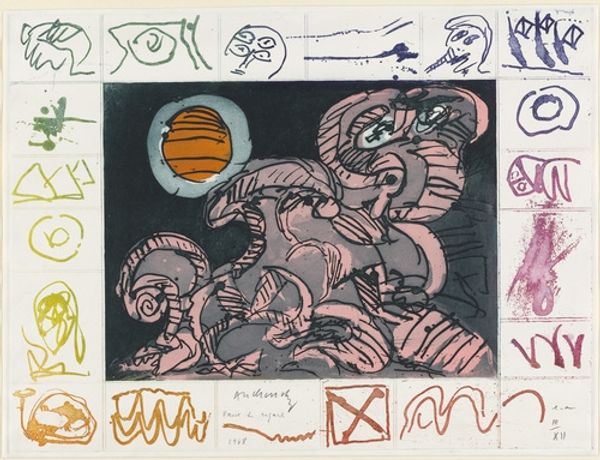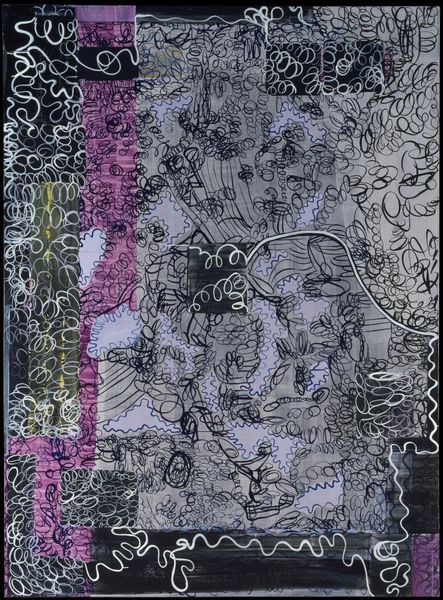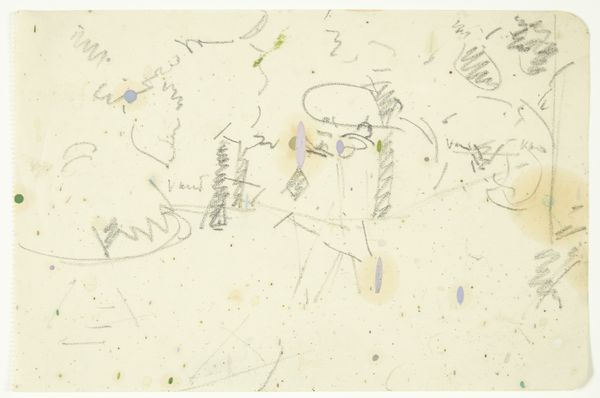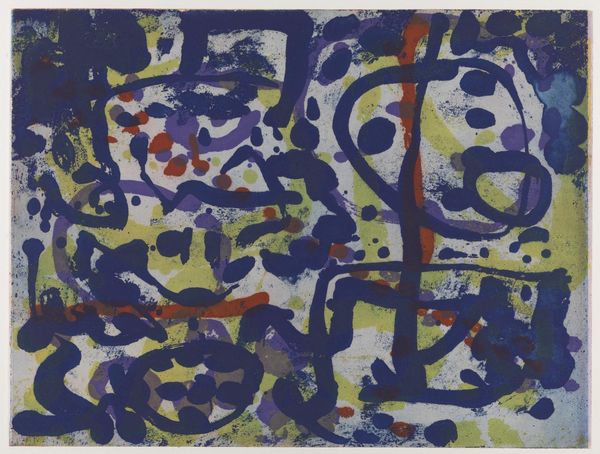
Copyright: Pierre Alechinsky,Fair Use
Curator: Here we have Pierre Alechinsky's 1986 mixed-media work, "Starboard," also known as "Tribord." My first thought is, the imagery feels playfully primal. Editor: Yes, it has an almost immediate quality to it. The central image—those colorful blots connected by looping dark lines—strikes me as botanical, but also maybe cellular. Do you get a sense of internal or external landscapes? Curator: I see both. The organic shapes, bordered by those glyph-like images around the perimeter, bring to mind cartography – ways of mapping internal states using familiar outer signs. Alechinsky's exploration of automatism – spontaneous creation free from conscious control - often brings together these symbolic elements. Editor: That's interesting, especially the frame. Those figures contained within individual panels almost seem like snapshots of society and belief systems. The frame and inner picture interacting with one another, almost acting like individual windows, speaking to broader interconnected socio-political structures. The contrast is stark between free play and regimented thought. Curator: The frame indeed creates a kind of visual discourse. These repeating motifs suggest an awareness of our cultural past, where stories were conveyed visually before widespread literacy, reminding us how we create, communicate, and share ideas over time using similar symbolic vocabulary. Editor: Do you see a political intention? How would it apply to contemporary issues? Curator: It isn’t overtly political. But its very aesthetic – playful, subversive, and dreamlike—goes against a certain kind of control and imposed order. To embrace chance and personal symbol systems, as he did, that becomes its own form of subtle rebellion, even resistance. Editor: The way Alechinsky balances chaos and order feels pertinent. He creates a conversation around these topics by presenting this mixed-media artwork in such a visually complex manner. I find it fascinating. Curator: Exactly. "Starboard" serves as a potent reminder of the layered, continuous dialogue that visual languages instigate—cultural memory passed from one generation to the next.
Comments
No comments
Be the first to comment and join the conversation on the ultimate creative platform.
